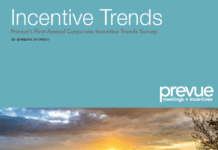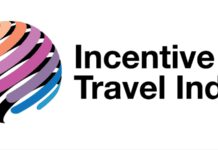
Incentive trends are looking up for 2022. However, while incentive budgets and spending are on the rise, is it enough to motivate today’s increasingly remote workforce? A recent Incentive Research Foundation webinar explored these and other top trends driving incentives in today’s volatile corporate climate.
Incentives are more important than ever as Corporate America continues to navigate its way through an employment environment filled with uncertainty, a workforce in flux due to the “Great Resignation” and an increasingly remote employee base where 41% say they would seek employment elsewhere if required to go back to working in the office.
The good news for incentive professionals is that, according to the Incentive Research Foundation (IRF) 2022 Trends Report, the bean-counters understand the important role incentives play in recruiting, retaining and engaging employees in today’s volatile corporate environment. Overall, incentive budgets are expected to increase by more than a third — 34% — this year, and per-person spending is up from $764 in 2021 to $806 in 2022. This $42 per-person bump is a positive sign, though it also reflects price increases due to ongoing inflation, inventory, workforce and supply-chain challenges.
During a recent IRF webinar, panelists — Stephanie Harris, IRF President; Richelle Suver, IRF Research Committee Chair and Vice President, Incentives &Recognition, One10LLC; and Andy Schwarz, IRF Vice President, Content and Communications — talked about the Trends Report results as well as what lies ahead for the incentives industry as reported in The IRF 2022 Trends Report.
Incentive Trend: The 2022 Budget Bump
Suver said that one of the logical conclusions to be drawn from the incentive budget increase for 2022 is that incentives are more important than ever, and not just for sales rewards. “They are a tool for communication and engagement, and there’s a pent-up desire for companies and individuals to get back out there and reinvigorate programs that maybe had to be put on hold over the last year or two.”
How those budgets are allocated can vary from group travel to reward and recognition points and programs, to gifting experiences, panelists said. In terms of expanding company culture, “We saw a trend … where respondents wanted to motivate the maximum number of employees and partners as possible,” said Suver. This reflects a desire to motivate the middle as well as just the top performers, to connect as many participants as possible to the sponsor organization.
The research points to more companies adopting new strategies for using points programs as well as hybrid events as part of a larger reward spectrum, she added. This can help get the maximum number of employees on board with corporate culture, even with a hybrid or fully remote workforce.
Merchandise budgets also were up 30% over 2021 levels, and gift card budgets were up 34%, which may be a reflection of the need to provide rewards for remote workers and those who are unwilling or unable to partake in travel incentives. Now that a remote workforce appears to be the new standard for many companies, it’s important to rethink how incentives can be used to provide connection and recognition toa decentralized team. “Remote workers can’t be an afterthought,” said Schwarz. “Managers need to be trained to keep incentives, communication and engagement top of mind.”
Incentive Trend: Hybrid Incentive Programs
While Harris said hybrid incentive programs can be highly effective in bringing people together, they do have limitations. For example, top incentive performers want to network with each other and also with the leadership of the organization on an incentive travel program. “Zooming people in to hear the business portion can be a little rough…it’s something we have to be really thoughtful about.”
And be mindful that what worked in 2020 may not work in 2022 as the situation continues to evolve. As Harris pointed out, when someone in their office is remotely watching people in a fabulous location, it could end up having the opposite effect of what you intended.
Incentive Trend: Travel Is Still Tops
Incentive travel is still highly motivating, the panelists said. In fact, 98% of respondents said group travel was extremely or very motivating, which speaks to the short- and long-term value of incentive travel, panelists said.
That doesn’t mean it’s without its challenges, not the least of which being ongoing issues with COVID-related regulatory changes. Then there are labor challenges and supply-chain issues, all of which make it challenging to select destinations. That’s why it’s more important than ever to know your groups’ motivators and tolerance levels. How do they feel about vaccine mandates for air travel or entry into the destination? And be mindful that other disruptors could crop up, such as the war in Ukraine that could make travel to some European destinations more difficult. The panelists recommended surveying attendees to determine their preferences and tolerances, and clearly communicating with them throughout the process.
If you have had trouble getting the C-Suite on board with incentives, now is the time to bring it to the C-Suite’s attention because workforce recruitment and retention is at the top of their agenda, the panelists emphasized. Have those conversations about how incentives can create culture and make a difference when it comes to hiring, motivating, engaging and retaining top performers.
You Might Also Be Interested In
Incentive Outlook for 2022: 5 Key Trends
The Latest Trend in Corporate Gift and Amenity Experiences: High-end Retailers
Incentive Success: 5 Top Tips on How to Create Hyperlocal Experiences










